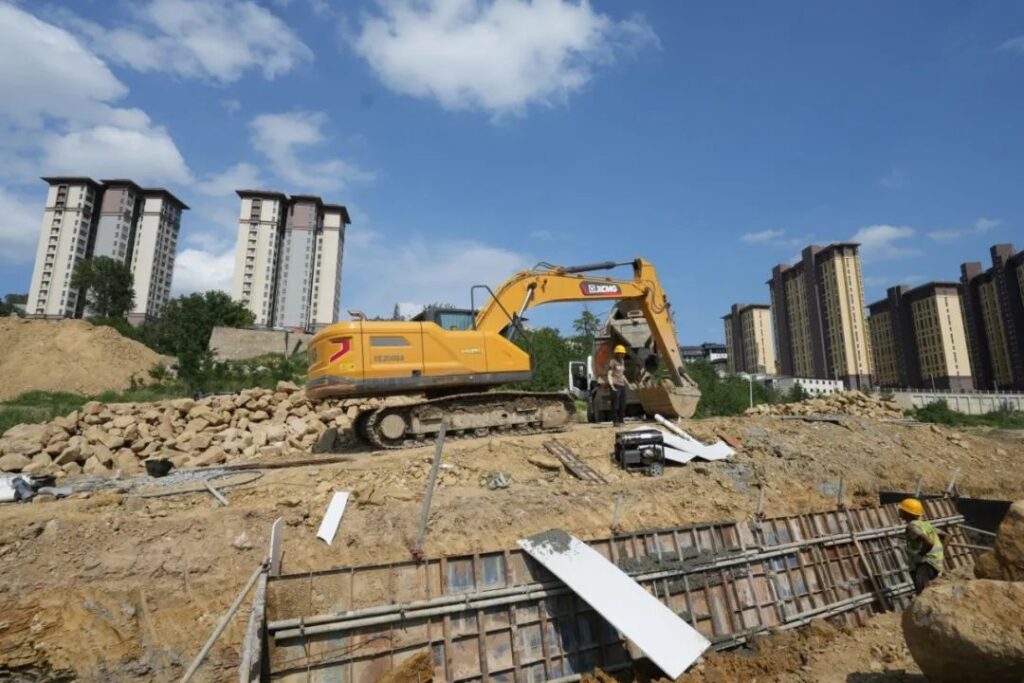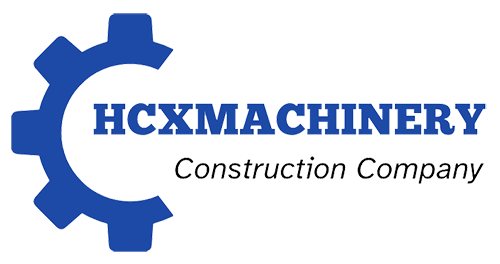Purchasing an excavator is a significant investment that can dramatically enhance your operational capabilities. However, the sheer variety of types and sizes available on the market can make the decision process daunting. Choosing incorrectly can lead to inefficiency, increased operational costs, and project delays.
For international buyers looking for value, reliability, and performance, the used excavator market presents an exceptional opportunity. This guide will provide an in-depth analysis of how to select the perfect excavator size for your needs—from Micro excavators to Big excavators—while also introducing you to the specialized machines changing the industry, such as Wheel Excavators, New Energy Excavators, and Special Operations Excavators.
As a leading international supplier of high-quality used excavators, we pride ourselves on not just selling machinery, but on providing solutions. Our rigorous inspection process, global logistics network, and commitment to customer success ensure you get the right machine, at the right price, ready to work.

Chapter 1: The Foundation – Understanding Excavator Size Classes
Before diving into specific models, it’s crucial to understand how excavators are categorized. Size is primarily determined by operating weight, which directly correlates to power, reach, dig depth, and, most importantly, application.
- Micro/Mini Excavators: Typically under 6 tons (13,000 lbs). Ideal for tight-access work and light-duty tasks.
- Small Excavators: Ranging from 6 to 10 tons (13,000 to 22,000 lbs). A versatile step up from mini excavators for small to medium projects.
- Medium Excavators: Ranging from 10 to 30 tons (22,000 to 66,000 lbs). The workhorses of construction, demolition, and utility projects.
- Large/Big Excavators: Ranging from 30 to 85+ tons (66,000 to 180,000+ lbs). Reserved for major earthmoving, mining, and large-scale infrastructure projects.
Specialized categories like Wheel Excavators (defined by their undercarriage) and New Energy Excavators (defined by their power source) can fall into these size classes.
Chapter 2: Deep Dive into Size Categories and Their Applications
2.1 Micro Excavator & Small Excavator: Precision in Confined Spaces
Defining Characteristics:
Micro and small excavators are characterized by their compact dimensions, low weight, and often zero or minimal tail swing. This allows them to operate in incredibly tight spaces—backyards, indoor demolition, between buildings, and on finished landscapes—without causing damage.
Key Advantages:
- Unmatched Accessibility: Their size is their greatest asset. They can pass through standard gates, fit inside shipping containers for easy transport, and work close to structures.
- Versatility with Attachments: Despite their size, they are highly versatile. They can be equipped with hydraulic breakers, augers, tilt rotators, and compact grapples for tasks like digging footings, breaking small concrete slabs, drilling fence posts, and landscaping.
- Cost-Effectiveness: Lower purchase price, reduced fuel consumption, and the ability to be transported on smaller trailers behind heavy-duty trucks drastically lower ownership costs.
- Minimal Ground Disturbance: Their low ground pressure makes them ideal for working on sensitive surfaces like turf, pavers, or inside existing facilities.
Ideal Projects:
- Residential landscaping and pool digging
- Utility work (water, gas, fiber optic lines)
- Interior demolition and renovation
- Plumbing and electrical trenching
- Small farm and agricultural tasks
Why Choose a Used Micro/Small Excavator from Us?
Our inventory of used mini and small excavators undergoes a meticulous 100+ point inspection. We ensure the undercarriage, hydraulic system (including auxiliary circuits for attachments), and engine are in top working condition. Many of our models come with full service histories, giving you peace of mind for your precision-focused projects.
2.2 Medium Excavator: The Versatile Workhorse
Defining Characteristics:
The medium excavator is the most common and versatile machine on job sites worldwide. It strikes the perfect balance between power, stability, transportability, and attachment versatility. It offers significantly more digging force, reach, and lift capacity than smaller models while remaining relatively easy to transport without requiring specialized permits in most cases.
Key Advantages:
- Optimal Power-to-Size Ratio: Provides substantial digging power and productivity for a wide range of tasks without the logistical headaches of larger machines.
- Maximum Attachment Versatility: This is the prime category for attachment use. From heavy-duty breakers and shears for demolition to grapples, thumbs, and compaction wheels, a medium excavator is a true multi-tool.
- High Productivity: Faster cycle times and larger buckets mean more material moved per day compared to smaller units.
- Excellent Stability: A wider stance and greater weight provide superior stability for heavy lifting and demanding demolition work.
Ideal Projects:
- General construction (foundation digging, basements)
- Road and bridge construction
- Commercial site development
- Medium to large-scale demolition
- Quarry and aggregate work
Why Choose a Used Medium Excavator from Us?
We understand that reliability is non-negotiable for your primary revenue-generating equipment. Our medium-sized models are sourced from reputable rental fleets and first owners who have maintained them to high standards. We focus on popular, dependable models known for their durability, easy maintenance, and strong parts availability globally, ensuring your workhorse keeps running.
2.3 Large Excavator & Big Excavator: Unleashing Massive Productivity
Defining Characteristics:
These are the titans of the earthmoving world. Large and big excavators are defined by their immense power, massive bucket capacities, and ability to move staggering volumes of material quickly. They are built for maximum output in demanding environments.
Key Advantages:
- Unmatched Production Rates: The sheer scale of these machines allows them to complete projects in a fraction of the time it would take smaller excavators.
- Superior Reach and Depth: Long booms and arms enable deep digging (e.g., for ponds, deep foundations) and high-reach demolition.
- Heavy Lifting Capability: Equipped with powerful hydraulics and robust structures, they are essential for heavy lift applications on major industrial sites.
- Durability in Extreme Conditions: Built to withstand the most abrasive and punishing environments, such as mining and major quarry operations.
Ideal Projects:
- Major earthmoving for highway and dam construction
- Large-scale mining operations
- Deep foundation excavation for skyscrapers
- Port and shipyard material handling
- High-reach demolition of large structures
Why Choose a Used Large Excavator from Us?
Investing in a used large excavator requires deep technical expertise. Our team includes certified mechanics who perform structural integrity checks on the main frame, boom, and arm. We conduct hydraulic pressure tests and thoroughly inspect the undercarriage for wear. We are transparent about the machine’s history and condition, providing detailed reports and hours verification. Our global logistics team specializes in handling the complex shipping and export documentation required for these massive machines.
Chapter 3: Beyond Size – Specialized Excavator Types
Choosing the right size is only part of the equation. The nature of your project might demand a specialized machine.
3.1 Wheel Excavator: Mobility and Speed
What It Is: An excavator mounted on wheels instead of tracks.
Key Advantages:
- High Mobility: Can quickly travel between job sites on public roads at higher speeds without a trailer, saving time and cost.
- Zero Ground Damage: Ideal for working on finished surfaces like asphalt, concrete, or paved roads without causing damage like a track machine might.
- Versatility: Often equipped with outriggers for stability and can sometimes function as a wheel loader.
Best For: Municipal work, utility repair in urban areas, road maintenance, and projects requiring frequent relocation.
3.2 New Energy Excavator: The Sustainable Future
What It Is: Excavators powered by alternative energy sources, primarily electric batteries or hydrogen fuel cells.
Key Advantages:
- Zero Emissions: Perfect for indoor work, enclosed spaces, and cities with strict emissions regulations.
- Radically Lower Noise: Significantly reduces noise pollution, allowing for work in noise-sensitive areas and extended hours.
- Reduced Operating Costs: Lower cost of electricity vs. diesel and greatly decreased maintenance (no engine oil, filters, exhaust systems).
Best For: Indoor demolition, urban redevelopment, utility work inside buildings, and companies with strong sustainability goals.
3.3 Special Operations Excavator: Engineered for Unique Challenges
What It Is: Not a size, but a category for machines modified with specialized features like long-reach arms, demolition specifications, or amphibious capabilities.
Key Advantages:
- Task-Specific Design: Engineered from the factory or expertly modified to excel at one specific task, offering unmatched performance and safety.
- Enhanced Safety Features: Demolition models, for example, come with reinforced cabs, falling object protection, and extra hydraulic circuits for specialized attachments.
- Unique Capabilities: Amphibious excavators can work in swamps and waterways, while long-reach models can dredge rivers or work on slopes.
Best For: Deep excavation, high-reach demolition, dredging, marshland restoration, and other niche applications.
Chapter 4: The Decisive Factors – Your Project Checklist
Use this checklist to systematically determine your ideal machine:
- Project Scope & Material Type: What are you digging? Hard clay, rocky soil, or loose sand? Volume of material to be moved?
- Job Site Conditions & Access: Is the site tight or open? Are there overhead obstacles? What is the ground condition (soft, muddy, solid)?
- Required Attachments: Will you need breakers, augers, grapples, or thumbs? This influences the required hydraulic flow and pressure.
- Transportation & Logistics: How will you get the machine to the site? Do you have the correct trailer and truck? Consider transport width, weight, and height.
- Budget (Total Cost of Ownership): Look beyond the purchase price. Consider fuel efficiency, maintenance costs, expected downtime, and parts availability.
- Operator Skill & Comfort: Larger machines require more experienced operators. A comfortable cabin can improve productivity.
Chapter 5: Why Partner with Us for Your Used Excavator Needs?
Choosing the right machine is only half the battle; choosing the right partner is equally critical. Here’s what sets our company apart in the global used excavator market:
- Curated, High-Quality Inventory: We don’t just aggregate listings. Our experts physically inspect and hand-select every machine based on its service history, mechanical condition, and overall value. We specialize in late-model, low-hour machines from reputable brands known for their global parts and service support.
- Unmatched Technical Inspection Process: Every excavator undergoes our proprietary, multi-point inspection protocol. This includes:
- Engine & Hydraulics: Comprehensive diagnostic testing for power output, hydraulic pressure, and leak detection.
- Structural Integrity: Close examination of the main frame, boom, arm, and bucket for cracks, welds, and stress points.
- Undercarriage: Precise measurement of track chains, rollers, idlers, and sprockets to provide accurate remaining life percentages.
- Functionality & Electronics: Testing all controls, gauges, and modern computer systems for faults.
- Transparency & Certification: We believe in radical transparency. You receive a detailed inspection report with high-resolution photos and videos of any imperfections. Many of our machines come with a condition certification, giving you the confidence to buy sight-unseen from anywhere in the world.
- Global Logistics & Export Expertise: We are your single-point solution. Our in-house logistics team handles everything: expert loading, containerization, ocean freight, customs clearance documentation (Certificate of Origin, Bill of Lading, Commercial Invoice), and delivery to your nearest port. We ensure a smooth, hassle-free shipping process.
- After-Sales Support & Parts Network: Our relationship doesn’t end at the sale. We provide continued support by assisting you in sourcing operation manuals and connecting you with a reliable global parts network for your specific model.
Conclusion: Make an Informed Investment
Selecting the right excavator size—whether a nimble Micro excavator, a versatile Medium excavator, or a productive Big excavator—is a strategic decision that directly impacts your profitability and project success. By understanding your project requirements and partnering with a knowledgeable and reliable supplier, you can secure a machine that will deliver performance and value for years to come.
The used equipment market offers a smart path to acquiring powerful machinery while maximizing your return on investment. By focusing on quality, condition, and supplier reputation, you mitigate risk and gain a competitive edge.
Explore our extensive online inventory today. Use our detailed filters to find the perfect Mini, Small, Medium, or Large excavator, including specialized Wheel Excavators and other unique models, for your next project. Contact our expert consultants for a free, no-obligation consultation and quotation. Let us help you make the right choice.

